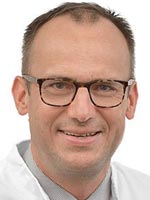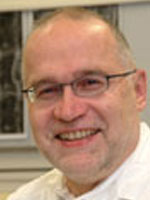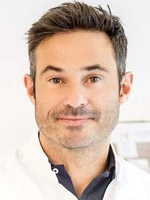Plica is a fold of the mucous membrane that starts from the inner synovial membrane.
It is formed from collagen fibers and a very thin mucous membrane with a smooth surface (synovial skin) that lines the inner surface of the joint capsule. The synovial skin secretes a liquid mass, the so-called synovial fluid.
This reduces the friction within the joint cavity and provides nutrients to supply the articular cartilage.
What Are The Causes Of Plica Syndrome?
Like all joints, the knee joint is lined with a thin, smooth mucous membrane (synovial skin).
The synovial skin produces the synovial fluid (synovia), which reduces friction in the joint and supplies the articular cartilage with nutrients.
In the course of embryonic development, this synovial skin forms a membrane (layer) that divides the knee joint into two separate areas.
This membrane usually forms at the end of child development so that there is greater freedom of movement in the knee joint.
In about 50-70% of adults, however, a mucosal fold (plica) remains. This is usually located below, above or on the inside (medial) of the patella. According to their location, they are called
- Plica infrapatellaris
- Plica suprapatellaris and
- Plica mediopatellaris
designated.
Many people with a plica have no problems. However, if the plica is more prominent, irritation and inflammation / plica syndrome can occur. Above all, overworking the knee leads to irritation of the plica and thus to the so-called plica syndrome.
Stressful activities in which the knee is often bent and then stretched again (e.g. jogging, cycling, aerobics, ball sports, etc.) are the most common causes.
Other causes of plica syndrome are injuries (trauma):
- repeating microtrauma
- an instability in the knee joint
- a muscular imbalance in the knee
- inflammation of the inner skin of the joint (synovitis)
The injury mechanisms play a role in those who bring the inner (medial) ligament portions under increased tension or directly injure them.
A functional weakness of the inner part of the four-headed front thigh muscle (vastus medialis muscle) with a change in the tension of the inner parts of the capsular ligament can also be considered as the triggering moment.
As a result of the pinching of the plica mediopatellaris, which has been converted into connective tissue, between the thigh (femur) and the kneecap (patella), indentations and pannus formation (inflammatory, vascular-rich connective tissue) can appear on the inside of the joint-forming thigh bone or on the inside of the kneecap edge.
This means that this thickening of tissue then rubs against the cartilage inside the knee joint. With continuous stress, this can lead to damage to the articular cartilage or to knee joint inflammation (plica syndrome).
Symptoms Of Plica Syndrome
Injuries (trauma), repetitive microtraumas, instability in the knee joint, a muscular imbalance in the knee and inflammation of the inner skin of the joint (synovitis) lead to swelling and thickening of the plica (mucosal fold).
Repeated pinching with inflammation (inflammation) and connective tissue (fibrotic) remodeling creates a self-sustaining process that is associated with recurring pain, joint effusion, restricted movement, joint snapping and joint blocking.
With plica syndrome, the pain is located on the inside and depends on the load.
Sometimes there is a blockage between the inside edge of the patella and the lower part of the thigh bone (femoral condyle) during the stretching movement.
Often, rubbing or snapping can be felt on the inside edge of the patella.
The increasingly connective tissue (fibrosed) mediopatellar plica can often be felt as a painful strand.
Sometimes there is a crack in the joint in a certain position during joint flexion.
Depending on how strongly the plica syndrome has already progressed, a distinction is also made between the symptoms that are triggered by it.
Beginning plica syndrome
At the beginning of the disease, there is usually stress-related pain in the knee area. Movements often trigger complaints that are particularly stressful for the knee and muscles. Movements such as climbing stairs, cycling or jogging should be mentioned here. Swimming, on the other hand, is considered a gentle form of movement.
In addition to sporting activities, long standing and uneven stress in the knee joint are described as aggravating the symptoms.
At the beginning of the disease, the movements mentioned must be carried out long before the patient complains of symptoms. It is usually pain that originates from inside the knee. The character of the pain is often described as pulling or biting. It can also hike and can then be located further up from the inside of the knee. The pain is often triggered during the actual movement, then lasts as long as the movement is carried out and then decreases as soon as the knee returns to a resting position. The pain can therefore be provoked by movement; it is usually only triggered at the beginning of the disease when there is intense stress.
Advanced plica syndrome
As the disease progresses and the degree of inflammation progresses, there is an influx of inflammatory fluid into the knee joint. This can lead to swelling in the knee, which in turn leads to a reduction in space in the joint. The narrowness in turn leads to tension pains, which the patient can experience in addition to the symptoms of plica syndrome. The swelling in the knee joint can also result in the knee no longer being able to be bent or stretched in the usual way; in the event of severe swelling, the kneecap can be lifted off the knee and become clearly palpable. Sometimes there may be signs of a so-called "dancing patella". This is a liquid-raised kneecap that appears to float above the knee joint and can be pushed slightly to the side with light pressure.
If plica syndrome persists for a long time and has not been treated, the inflammatory reactions of the body increase. While initially only heavy loads led to the complaints in the knee, the complaints now occur even with relatively slight movements. The reason for this is that the inflammation in the knee joint can no longer be cured and reduced by rest, a certain residual inflammation always remains in the knee, even if no heavy stress is currently being exerted on the knee.
The complaints also increase in intensity. For example, the pain in the knee joint is described as being much more acrid and pulling than with a beginning plica syndrome. Effusions can also occur earlier and build up faster. Reddening can rarely be seen with a pronounced plica syndrome.
In addition to the pain and the impairment of movement, those affected repeatedly describe an audible crack that occurs when the stretched leg is brought into a bent position or vice versa. The reason for this is probably a sudden, sudden drop in the condyles in the knee joint. This is also a sign of the beginning of instability in the knee joint.
Corresponding pain, which arises from a beginning but also advanced plica syndrome, also leads to the patient going into a gentle posture with normal movements in the knee joint in order to reduce the corresponding pain. This gentle posture inevitably leads to incorrect loading in the knee joint. The knee is no longer strained in the usual way. Acutely incorrect loads lead to further pain, which the patient also perceives. In the long run, however, such incorrect loads lead to osteoarthritis of the upper and lower leg as well as the pelvis. As a rule, therapy is initiated as plica syndrome progresses.
Pronounced plica syndrome
If a plica syndrome is very pronounced or has been developing for a long time, it can also lead to pain at rest without having been exercised. At the latest now all patients are going to the doctor, because the non-treatment would lead to an increasing loss of movement.
The pinched plica can usually be mobilized again with a corresponding movement, which then reduces the peak of pain accordingly. Sometimes, however, it can happen that this pinching cannot be released by movement and remains. This then leads to severe to severe pain at rest or even when moving; the patients mostly try to get the tolerable position out of themselves with the smallest movements in the knee joint and are usually very pain-plagued. Even with this relatively rare course of plica syndrome, rapid action is required to prevent irreparable damage to the knee area.
Diagnosis Of Plica Syndrome
To diagnose a plica syndrome, one first tries to localize the pain precisely or to detect a thickening in the area of the kneecap.
Often you can also feel the plica rubbing in the knee joint when moving.
The Zohlen sign is positive. With the Zohlen sign, the upper edge of the kneecap is gripped with the thumb and index finger and the kneecap is pushed down (caudalized). If the four-membered front thigh muscle (quadriceps muscle) is tightened, the kneecap is pressed onto the lower parts of the thigh bone (femoral condyles), which is perceived as painful if the cartilage is damaged.
50% of all patients generally find it very uncomfortable to do this test on them.
Overall, plica syndrome is not easy to diagnose because the diagnosis is made more difficult by overlaying other pathological lesions (cruciate ligament rupture, meniscus damage, etc.).
A magnetic resonance examination (imaging procedure) can also be helpful when making a diagnosis. However, it does not always have to provide a clear finding.
In some patients, plica syndrome is only finally proven by knee mirroring (arthroscopy). It follows that the exact clarification is almost only possible by arthroscopy. On the other hand, the diagnosis of plica syndrome is often a diagnosis of embarrassment if, in the case of recurring complaints in the knee joint, no other pathological changes that explain the symptoms are detectable in the knee joint.
Therapy Of Plica Syndrome
If a plica syndrome has been diagnosed, the severity of the disease is first assessed, after which the treatment strategy is also aligned. There is a general distinction between conservative and surgical therapy.
Plica syndrome is initially treated conservatively.
It is carried out with local and oral anti-inflammatory drugs (anti-inflammatory drugs).
Conservative therapy also includes protection, physiotherapy with connective tissue massages and training of the often reduced-strength medial portion of the four-headed front thigh muscle (vastus medialis muscle).
Ice cooling is also helpful and relieves pain and swelling. The local administration of anti-inflammatory syringes (steroid injection) is questionable with regard to their effect in the treatment of plica syndrome.
The problem with plica syndrome, however, when it occurs in athletic patients, is that the symptoms usually do not get better because the inflamed and hardened edge of the plica continues to rub and destroy the cartilage.
Therefore, knee mirroring (arthroscopy) should be considered early in athletic patients.
Otherwise there is an indication for arthroscopy if the complaints do not disappear due to conservative therapy. In arthroscopy, the plica is removed (resected).
Conservative Therapy
All therapeutic instruments that are not surgical are used.
First of all, it is important to protect the affected knee. Sports overload should be avoided entirely. Strain on the knee, such as occurs when jogging or hiking in the mountains, should also be avoided if possible. Swimming and other joint-protecting measures are highly recommended. The leg should not be kept in a resting position, because this is not good for the joint and increases the risk of deep vein thrombosis.
In addition to reducing the overload, pain relief measures should be carried out. Physical pain treatment should be mentioned. This includes regular treatment with ice packs, which should be placed on the knee.
Physiotherapeutic attempts can also be made to relieve the knee joint as much as possible by means of appropriate exercises for the muscles around the knee. Physiotherapy should be carried out regularly and care should be taken to ensure that the muscles are not overloaded.
It can also be helpful to stabilize the knee during everyday movements (such as running, bending and stretching). The use of a bandage can be useful and helpful for this. However, the knee should still move freely and not be too compressed. If the bandage intensifies the pain, the bandage should be loosened or completely omitted.
Medicinal pain treatment is also part of the conservative treatment of plica syndrome. It makes sense to combine a drug that has both analgesic and anti-inflammatory effects.
Ibuprofen and diclofenac are always popular in orthopedics and have these two effects. Ibuprofen can max. up to 800 mg three times a day, while diclofenac reaches its upper limit of effectiveness at 75 mg twice a day.
Note the relatively new contraindications to diclofenac. For example, patients with coronary heart disease should not be given this medication because the cardiovascular risks increase with regular use of the medication. Ibuprofen should also only be used in this case after careful consideration. If no cardiovascular risk factors have been previously described, care should be taken to ensure that patients do not suffer from reflux or chronic gastritis and ulcer, since the use of diclofenac or ibuprofen inhibits the build-up of the gastric mucosa. In this case, the two drugs should only be used in combination with a stomach protection preparation. Proton pump inhibitors such as pantoprazole or omeprazole are most frequently used here.
Surgical Therapy
If there is no improvement in the symptoms under the conservative treatment, consider whether an operation leads to the desired success. The operation is now performed minimally invasively and is also referred to as an arthroscopic procedure. It can be done under general anesthesia or by nerve blockage of the corresponding leg.
First, the patient is informed about the risks of the operation. These are bleeding that is difficult to stop, joint infection, wound healing disorders, allergic reactions to the anesthetic, or the need to operate the knee openly due to anatomical conditions.
After the patient has given consent to the procedure and anesthesia has been performed, the knee is washed with a sterile liquid. Two small skin incisions around the knee joint serve as the entry point for 2 rod-shaped instruments that are inserted into the knee joint. One is a camera with a bright light, the other is an inlet for liquid. It can also be used to insert instruments into the knee joint that are necessary for smoothing cartilage and for cutting and sewing.
After inserting the instruments, a diagnostic look begins in the knee joint. The camera provides real-time images that can also be recorded for documentation purposes. During the procedure, the knee is regularly bent and stretched to see whether parts of the knee are pinched during the movement and thus cause pain. If the examiner has found the plica, he begins the removal. In addition, excess and disruptive cartilage can be removed using a smoothing instrument. Sterile liquid is now pumped into the knee joint through the water inlet and immediately sucked off again. The shredded parts of the plica are also rinsed out of the knee joint.
Shortly before the end of the procedure, small sutures are made and the joint skin is closed. Since this area is well supplied with blood vessels, it may often be necessary to stop bleeding using electrocoagulation. After removing the instruments, the skin incisions are treated with a skin suture and connected sterile. The sutures can then be pulled about 10-12 days after the procedure.
Surgery
Treatment of plica syndrome is often carried out conservatively. With the help of anti-inflammatory measures, attempts are made to reduce the painful conditions of plica syndrome. Furthermore, a treatment approach is often attempted through physiotherapy.
If the symptoms do not improve, an operative procedure should be considered.
The surgical intervention can either be carried out under general anesthesia or through a nerve block, in which the patient is conscious, but does not experience pain during the knee surgery.
In the past, such operations were performed only on the open knee. Today, the minimally invasive procedure is mainly chosen, which is also called joint mirroring or arthroscopy.
Arthroscopy of the knee
The knee mirroring is seen on the one hand as a diagnostic measure and as a therapeutic measure. If imaging techniques such as knee magnetic resonance imaging can make a fairly certain diagnosis of suspected plica syndrome, knee mirroring can provide definitive evidence.
In the case of joint mirroring, two small skin incisions are made on the previously disinfected knee joint, through which an instrument with a camera is then inserted. Another instrument is pushed through the other skin incision, which has a flushing device, but also an inlet, which makes it possible to insert other instruments, such as sutures and pliers, into the knee joint.
The knee is brought into a 90 degree angle on the patient before lying down. Then the two instruments are inserted through the skin incisions into the joint space. With the help of the camera and the bright light source attached to it, the knee can then be inspected and the position of the ligaments and cartilage and the space available can be assessed. With the aid of the flushing device, sterile liquid can be pumped into the knee joint and sucked out again. Cartilage that protrudes into the joint space can be smoothed and removed using an additional instrument.
During the examination, it is important not to keep the knee in a static position but to move it back and forth on the patient by bending and stretching. This is the only way to ensure that the examination can also see the corresponding space in the knee during normal movement. In the case of plica syndrome, this maneuver also shows whether there is an enlarged plica in the area of the knee joint. Throughout the procedure, the camera can take pictures and video recordings and record them for documentation purposes. If a plica syndrome has been safely diagnosed using this procedure, the diagnostic procedure is complete and the therapeutic procedure begins.
Here, the plica is removed piece by piece. For this purpose, a so-called milling cutter is inserted through a skin incision into the knee joint. This means that the inner skin of the knee is removed in the area that shows fibrosis and inflammatory processes can be seen. The removal takes place in this area except for the capsule. The removed material can be removed from the knee with small pliers and suction cups.
In contrast to the menisci, the joint skin is well interspersed with blood vessels. For this reason, it can sometimes occur that moderate to heavy bleeding occurs during the procedure, which must then be stopped by so-called electrocoagulation or injection. For this reason, it is important to clarify in advance whether the patient is taking blood-thinning medication such as ASA or Marcumar. These must then be removed accordingly before such an intervention.
After appropriate sutures have been made in the knee, the instruments are pulled out of the knee and the open wound on the knee joint is closed with a skin suture. After the skin wounds have been sterile bandaged, the patient is brought to the normal ward by the operating room. The procedure lasts between 20 minutes and an hour. In very rare cases, it may be necessary to continue the operation that was initially started arthroscopically. This is particularly necessary if the anatomical conditions in the knee joint do not allow a sufficient view through arthroscopy or if there is heavy bleeding that occurs during an operation and cannot be stopped arthroscopically.
The procedure is a routine procedure in orthopedics. However, complications can also arise here. In addition to bleeding that cannot be stopped during the operation, wound healing disorders and infections in the wound area can also occur after skin closure. In rare cases, infections of the knee can occur despite very sterile work. This very feared complication must be treated with antibiotics immediately. If no corresponding effect can be achieved, the knee may need to be opened again surgically. In addition to sterile rinsing, local antibiotic measures (e.g. insertion of antibiotic-coated chains) would then also be possible here.
Physiotherapy after surgery
Physiotherapeutic treatment should be started immediately after the operation. The aim of the treatment is to strengthen the muscles that surround the knee joint so that the joint becomes more resilient. The exercises can be carried out primarily with your own body weight or with the help of training bands. It is also important to train the trunk muscles as this contributes to the stability of the leg.
Walking training can initially consist of slow gears uphill on the treadmill. In the course of a jump training should be introduced, which prepares for jogging in the last step. Because jogging requires a certain ability to jump, because with every step both feet leave the ground for a short time.
It should also be checked whether there is a muscular imbalance between the extensor and flexor muscles of the knee. In this case, this should be remedied by targeted strengthening of the weaker muscles in order to reduce the pressure on the kneecap. An imbalance between the outward and inward muscles of the thigh also has a negative effect on the Plica syndrome, as this pulls the kneecap out of the midline and thus puts the wrong strain on it. Furthermore, a regular stretching of the knee muscles can be helpful.
Forecast
After arthroscopy, the symptoms usually improve after a very short time, unless there has already been significant cartilage damage.
Then there is no complete improvement even after the plica has been removed.

























































 Loading ...
Loading ...


